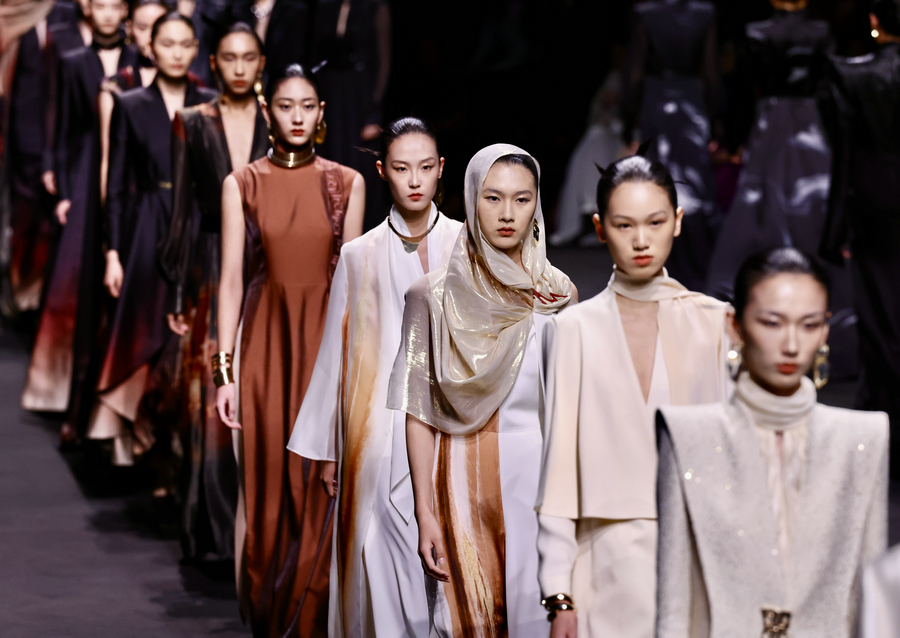China, often associated with technological advancements and manufacturing prowess, has also become a fertile ground for creative minds in fashion. Despite being relatively young, China’s fashion ecosystem has shown remarkable resilience and innovation. Independent Chinese designers are now at the forefront, setting trends and redefining the global fashion landscape.
In recent years, China’s fashion scene has undergone a significant transformation. The country’s post-COVID reopening, economic maturation, and demographic changes have all contributed to a dynamic shift in fashion trends. Homegrown designers are capturing the essence of these changes, crafting high-quality, innovative designs that resonate with local tastes and often surpass global brands.
Focus on Domestic Markets
The pandemic posed significant challenges for many designers, leading them to refocus on the domestic market as international movements were restricted. This shift has resulted in a growing interest in unique, niche brands that draw on cultural heritage and global trends. Consumers are increasingly confident in domestic brands, with over half expressing trust in their growth. The eCommerce China landscape has adapted to these changes, providing a robust platform for these designers.
Cultural Integration in Design
Chinese designers are adept at incorporating cultural elements into their creations, blending traditional motifs with modern aesthetics. This approach not only appeals to local consumers but also attracts international attention. The emphasis on cultural heritage allows designers to create unique products that stand out in a crowded market. Social marketing in China plays a crucial role in promoting these culturally rich designs on platforms like Wechat and Douyin.

Sustainability as a Core Value
Sustainability has become a key focus for many independent Chinese designers. Brands like Susan Fang have made significant strides in eco-conscious fashion, using innovative techniques and sustainable materials. Fang’s air-weaving method and collaborations with major brands like Zara and Swarovski highlight how sustainability can be integrated into mainstream fashion. This trend is also reflected in social commerce in China, where consumers are increasingly drawn to eco-friendly products.
Digital Innovation and the Metaverse
The digital landscape in China is highly advanced, providing designers with numerous opportunities to innovate. Brands like 8ON8 are leveraging the power of digital integration, combining physical and digital experiences to create immersive fashion presentations. The use of the Metaverse and NFTs has opened new avenues for brand engagement and consumer interaction. Social media platforms in China, such as Weibo and Little Red Book, are instrumental in promoting these digital innovations.

Collaborations and Partnerships
Collaborations play a crucial role in the growth strategy of independent designers. By partnering with both global and local companies, designers can increase visibility, improve supply chains, and reach new audiences. These partnerships have evolved beyond financial motives to mutually beneficial relationships that enhance brand value. The role of China influencers and KOLs (Key Opinion Leaders) is vital in these collaborations, driving consumer engagement and brand loyalty.
Reaching the Youth Market
The tastes of younger shoppers, particularly millennials and Gen Z, are driving the fashion industry’s evolution. These consumers value uniqueness and individuality, preferring products that reflect personal style rather than overt logos. Independent Chinese designers are adept at meeting these preferences, offering sophisticated designs that resonate with this demographic. Social media strategy in China is key to reaching this audience, leveraging platforms like Douyin and Wechat.
Business Strategies for Success
1. Eco-Conscious Co-Creation
Susan Fang’s brand exemplifies how sustainability and collaboration can drive success. Her innovative designs and strategic partnerships with major brands have broadened her reach and amplified her message of responsible beauty. Other brands can learn from Fang’s approach, leveraging social media and aligning with companies that share their values. Social commerce in China is a critical avenue for these brands to engage with eco-conscious consumers.
2. Immersive Digital Integration
8ON8’s integration of digital experiences into their brand strategy provides valuable insights for other designers. By embracing platforms like the Metaverse, brands can present their vision in dynamic ways, reaching new audiences and enhancing customer experiences. This approach not only captures the current zeitgeist but also sets a precedent for future fashion presentations. Digital marketing in China offers the tools and platforms necessary for these innovative presentations.
3. Adapting to Market Fluctuations
The fashion industry in China has seen fluctuating sales trends, particularly during the pandemic years. However, the upward trajectory observed in 2023 indicates a promising future. Local designers are gaining international recognition, and global brands are seeking partnerships to tap into the unique cultural resonance these designers offer. ECommerce strategy in China has adapted to these changes, providing robust support for these emerging brands.
4. Global Influence and Recognition
Chinese designers are not only making an impact within China but also gaining recognition on the international stage. Their ability to blend cultural narratives with cutting-edge design and sustainability has positioned them as leaders in the fashion industry. Global brands are increasingly looking to these designers for inspiration and collaboration. The integration of China marketing strategies has been pivotal in achieving this global influence.
Future Outlook for Chinese Fashion
The future of Chinese fashion looks bright, with independent designers leading the way. As digital avenues for self-expression expand and sustainability becomes increasingly important, these designers are well-positioned to shape the next wave of fashion. Their adaptability, innovation, and cultural integration will continue to drive the industry forward.





